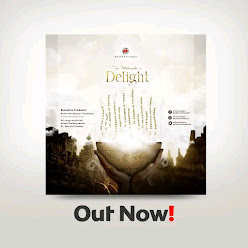What Happens to the Pope’s Body After Death? The Traditions and Truth Behind Papal Preservation
The death of a pope is a profound moment for the Catholic Church and its followers. As the world pays tribute to the life and legacy of Pope Francis, many are wondering: What happens to the pope’s body after he is buried? Is it preserved? Will people still be able to see his remains decades from now? These are natural questions — and the answers are rooted in centuries of tradition.
The Papal Burial: A Carefully Planned Ritual
After a pope passes away, his body is treated with deep reverence. The burial process follows a carefully structured set of rituals:
-
First, the pope's body lies in state in St. Peter’s Basilica, allowing the faithful to pay their last respects.
-
Second, a funeral Mass is held, attended by world leaders, clergy, and thousands of mourners.
-
Then, the pope is placed inside three nested coffins: one of cypress wood, one of lead, and finally one of elm or oak. This symbolizes simplicity, strength, and dignity.
Where Is the Pope Buried?
Most modern popes are buried beneath St. Peter’s Basilica, in the Vatican Grottoes, a crypt that also holds the tombs of many previous popes, saints, and Church figures. This sacred space is not only a burial site but also a place of pilgrimage.
Is the Pope's Body Preserved?
This is where fact and tradition meet curiosity. While popes are not embalmed in the traditional modern sense, certain measures are taken to slow decomposition. The three-coffin method itself helps preserve the body naturally by limiting air exposure.
Additionally:
-
The lead coffin is sealed tightly to protect the body from moisture and decay.
-
A brief preservation process may be used before burial (such as light embalming or refrigeration), but this varies depending on the health of the body and tradition.
It’s important to note: the Catholic Church does not practice or encourage permanent display of papal remains (with a few historical exceptions like Pope John XXIII, whose body was found incorrupt and moved to a glass tomb decades later).
Will the Pope’s Body Ever Be Seen Again?
For most popes, the answer is no. Once buried in the Vatican Grottoes, the tomb remains closed out of reverence. Pilgrims can visit the tombstone or mausoleum, but not the body itself.
However, future popes may choose to move or honor the remains of their predecessors as part of historical or spiritual observance — but this is rare.
A Symbolic Rest, Not a Public Display
In Catholic teaching, death is seen as a passage to eternal life, not a spectacle. The focus is on the spirit and legacy of the pope — not his physical body. The burial is symbolic, solemn, and sacred.
So, while the pope’s body may be preserved in some form by tradition, it is ultimately laid to rest in peace, hidden from public view, beneath the very heart of the Catholic Church.


.jpg)
.jpg)






![[Must Read] "Can A Woman Be A Pastor Or Preacher?"](https://blogger.googleusercontent.com/img/b/R29vZ2xl/AVvXsEhctf9hc8aetN676kVmXs6WmmD8EglRXcCiLjlfbmHWTNaQeVyx-6mrpvX5Zha1NYHY9OhN63cff8fDzdfhnVmfs-rQ66kSvH5U0JHSbAKy6AapZSWwkatRcM1Nb-W06nAUh99xpVEP0eSv/s1600/IMG_20181226_214206_124.JPG)